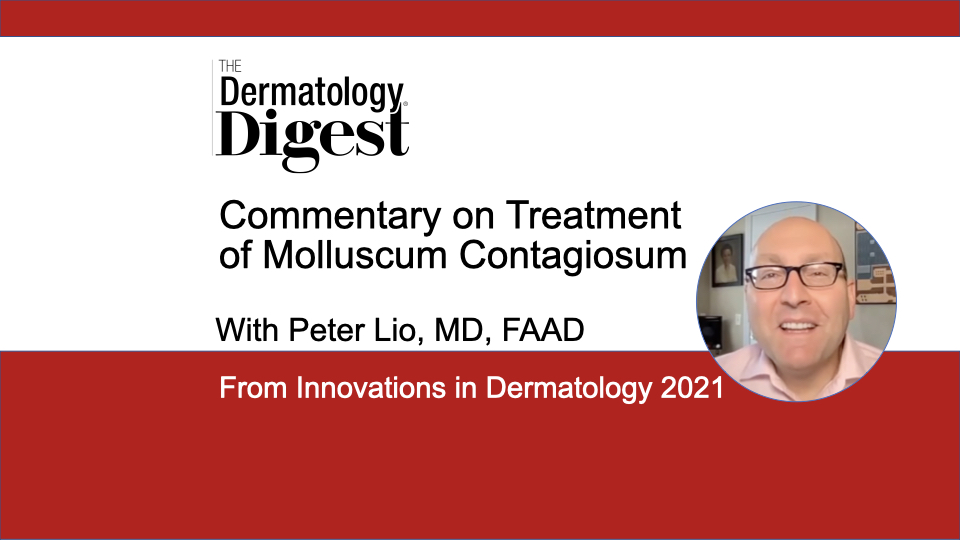Dr. Peter Lio discusses current and future treatment options for molluscum contagiosum, including 2 in late-stage development.
Peter Lio, MD, FAAD, is Clinical Assistant Professor of Dermatology and Pediatrics at Northwestern University Feinberg School of Medicine in Chicago, Illinois.
“We’re certainly not advocating going out finding every patient with molluscum and trying to treat them. But for those patients that need our help, we often find that what we have in our therapeutic armamentarium is somewhat limited,” said Peter Lio, MD, FAAD, who discussed current and future treatment options for molluscum contagiosum (a poxvirus) at this year’s Innovations in Dermatology meeting.
“[Molluscum contagiosum] is a really pesky skin infection that affects not only the patients who suffer with it, but also their family—and even the caregivers—because it drives all of us crazy,” said Dr Lio, Clinical Assistant Professor of Dermatology and Pediatrics, Northwestern University Feinberg School of Medicine, Chicago, Illinois. “It’s difficult to control sometimes. And it really can push us to the limit.”
While molluscum contagiosum is generally considered benign and self limited, in some patients it can cause skin irritation, itch, papules, and atopic dermatitis flare ups for patients with a history of skin disease. Resulting discomfort and social stigma can have a significant effect on quality of life, which is especially troublesome for the pediatric population that it primarily affects.
“Sometimes patients come in and they’re very tearful because they’ve been told they can’t go swimming. They can’t go to day camp. Of course, we know for our athletes, they often have to be sidelined, especially our wrestlers if they have any molluscum lesions on their skin.”
In terms of lesion treatment, both cryotherapy and curettage are options, said Dr. Lio.
“I really do think [curettage] is very effective. It can be uncomfortable, and is actually visually pretty intense. There’s often some bleeding and the patients seem really uncomfortable during it. It can be kind of traumatic for patients and families.”
Imiquimod is another treatment option, he said, but should be used with caution.
“[Imiquimod] drives inflammation in the area, and I, unfortunately, have seen a number of cases where they have terrible erythema, irritation, and even erosions. We reported a case in the journal Pediatrics1 a number of years ago where a patient actually developed febrile seizures, presumably from the cytokine storm induced by applying Imiquimod to a child with molluscum in the diaper area. So it’s not one of my favorite treatments, although I certainly don’t dispute the fact that it can work in certain situations and certainly makes sense.”
Dr. Lio’s preferred treatment is Cantharidin, a vesicant blister producer.
“Cantharidin has been used a very long time and it is the extract from this blister beetle. We can usually apply just the tiniest amount to the molluscum themselves. I really like to use the wooden end of a cotton tipped applicator, and I like to let that air dry while they’re in the office just for a few minutes.”
Patients are instructed to wash it off in three or four hours.
While Cantharidin has historically been an option for treating molluscum in the dermatologist’s office, it has not available as a prescription for patients, said Dr. Lio.
“There’s a little bit of a gray area. I know a few years ago some institutions said that they can’t use it anymore because of the complexities surrounding its prescription and usage.”
Cantharidin is currently being investigated as an approved treatment for molluscum. A nitric oxide releasing product is also in late-stage development as a treatment option for this viral infection.
Reference:
1. Mosher JS, Lio P. Cytokine dermatitis and febrile seizure from imiquimod. Pediatrics. 2012 Feb 1;129(2):e519-22.


